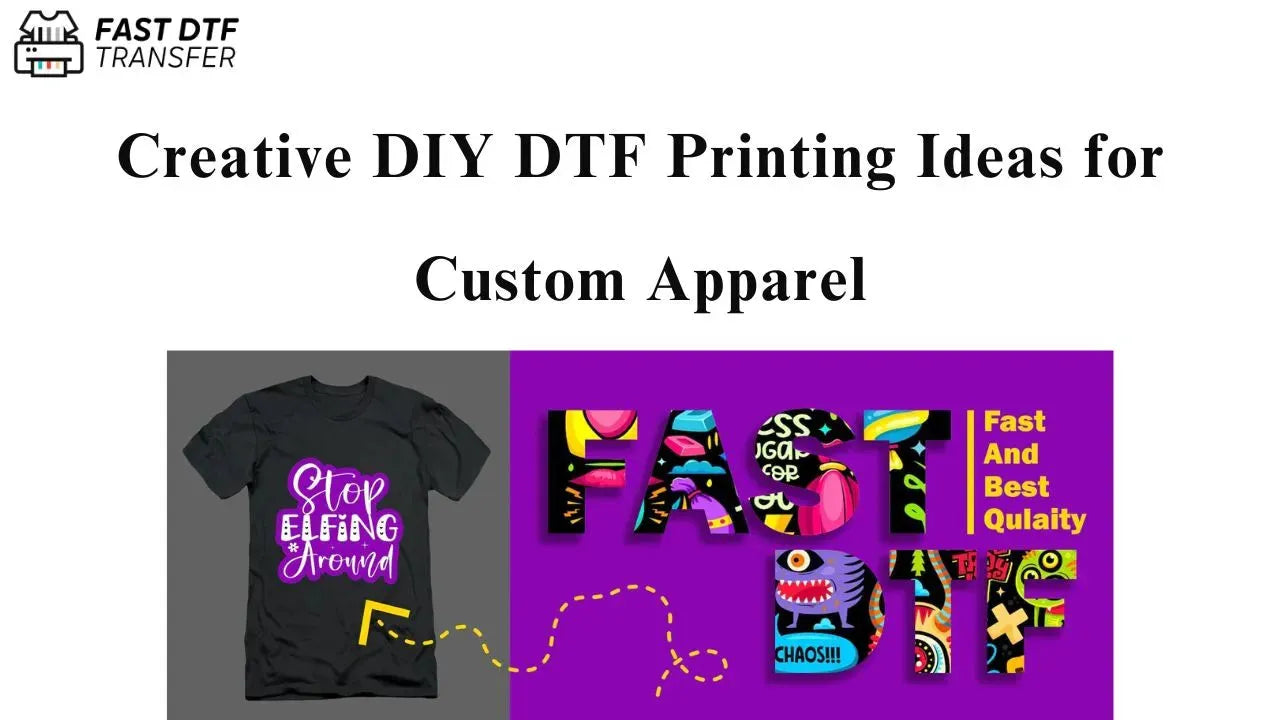
Top Trends in Digital Textile Printing for 2024
Top Trends in Digital Textile Printing for 2024
The digital textile printing world is set to grow big. By 2032, it could hit USD 3,432.02 million. This growth, at 5.1% per year, is due to more people using textiles in their home, industries printing on furniture, and eco efforts. The move to greener inks and less waste is changing how we print on fabrics.
Key Takeaways
- The global digital textile printing market is expected to grow at a CAGR of 5.1% from 2024 to 2032, reaching a valuation of USD 3,432.02 million.
- There's a higher demand for fabric printing in homes, industrial settings, and prints on furniture and clothes, helping the market grow.
- Being green matters, so companies are turning to eco inks and ways to make less waste.
- The Asia-Pacific area will grow the quickest, thanks to places like China, India, and Vietnam making and using more textiles.
- Big digital textile printing companies are looking into AI and machine learning to make better products more efficiently.
Digital Textile Printing: Overview and Scope
Digital textile printing is changing the textile world. It's more efficient and lets designers be creative. This process prints designs right on fabric from digital files. It's better than old print ways in many ways.
Definition and Classification of Digital Textile Printing Technologies
There are several types of digital printing. They include sublimation, pigment, reactive, and acid printing. Each one can make bright, detailed designs on different fabrics like cotton, polyester, and more.
Applications and End-Use Industries
Digital printing is used in many fields. It's big in fashion, home decor, and making industrial furniture look great. Also, soft signage, like banners, has seen the benefits. The demand for unique, quickly made clothes is growing fast, especially in direct-to-garment printing.
|
Application |
Description |
|
Textile and Decor |
Digital textile printing makes fashion, home textiles, and decorative prints more detailed and colorful. |
|
Industrial Furniture and Soft Signage |
It improves industrial furniture looks and makes soft signage, like banners, clearer and brighter. |
|
Direct-to-Garment Printing |
Direct-to-garment printing (DTG) is growing fast, making personalized clothes when people want them. |
The digital textile printing sector is growing quick. It's expected to hit USD 4.36 billion by 2031. This growth is thanks to people loving unique, custom fabrics and the printing world focusing on being green.
Market Growth and Forecast
The global digital textile printing market has been growing fast. In 2022, it was worth USD 2,669.9 million. It's expected to grow 14.4% each year from 2023 to 2030. This growth is due to digital printing being better than traditional methods in many ways.
Global Digital Textile Printing Market Size and Projected Growth
In 2022, the direct to fabric (DTF) printing method was very popular. It made up more than 67% of the market. The market was mainly controlled by cotton, having over 52% share. Yet, polyester is expected to grow by 15.2% each year. This shows how adaptable digital printing is.
Regional Market Analysis and Opportunities
Asia-Pacific led the market in 2020 with a share of 37.31%. Countries like China, India, and Vietnam are big in textile manufacturing. Europe is the biggest digital textile printing market. The Asia-Pacific market is set to grow quickly. This is because the demand is rising for eco-friendly and custom textiles.
|
Region |
Market Share (2020) |
CAGR (2023-2030) |
|
Asia-Pacific |
37.31% |
16.2% |
|
Europe |
35.42% |
13.8% |
|
North America |
19.47% |
12.5% |
|
Rest of the World |
7.80% |
11.9% |
The digital textile printing market will keep growing. This is because more people want custom and eco-friendly textiles. Various sectors like clothing, home decor, and soft signage are driving this growth. Manufacturers are working on new tech and eco-friendly ways to meet these demands.
Key Drivers and Restraints
The digital textile printing sector is set to grow significantly. This growth is led by a big demand for customized textiles and shorter runs. It's also driven by a focus on green printing in the textile industry trends. Yet, the industry faces challenges to reach its full potential.
Factors Fueling the Adoption of Digital Textile Printing
The big digital textile printing adoption drivers include the desire for unique, small-batch textiles. Old printing ways can't keep up with the need for one-of-a-kind designs quickly. Digital printing shines here, being flexible and fast. It meets changing consumer wants easily.
Eco-friendliness is another key reason for choosing digital textile printing. Unlike old methods that use lots of water, energy, and chemicals, digital is greener. It uses water-based inks, making less mess. This wins over green customers and businesses.
Challenges and Limitations Facing the Industry
Despite its bright future, digital textile printing has hurdles to overcome. Its high upfront costs scare off small players. Plus, not having enough skilled workers to run and fix the printing gear is a problem. This stops the industry from growing as fast as it could.
Also, the constant march of technology means companies have to keep investing to stay in the game. They need to offer what customers want and keep up with industry changes. This calls for money and a committed team.
|
Key Drivers |
Key Challenges |
|
|
As the digital textile printing industry matures, tackling these issues will be key. This approach will help producers make the most of new chances and achieve lasting success.
Emerging Technologies and Innovations
The digital textile printing industry is changing a lot. It's all thanks to new technologies. These include artificial intelligence (AI) and machine learning (ML). They're making textile printing better and helping businesses compete.
AI and ML are being used to make printed textiles look better and be more efficient to produce. They help companies cut down on waste and use less energy by making everything run smoother.
There are also advanced inkjet printheads being used now. They can print with higher quality and speed. This is important because more people want custom and fast textile printing.
The ITMA 2023 exhibition in Milan showed off lots of cool stuff in textile printing. People from 143 countries came to see it. This shows how much people care about the new trends and technologies.
Here are some of the innovative things shown at the event:
- Single-pass technologies with speeds reaching up to 100 meters per minute for efficient industrial production
- Digital inks with hybrid functions, offering pre-coating or post-coating capabilities to enhance the printing process
- Advancements in Direct to Film (DTF) technology, catering to the growing demand for personalized and on-demand textile printing
- Automation and AI-driven solutions for improved workflow optimization and color management, aimed at reducing waste and enhancing energy efficiency
These new developments are changing the industry. They're making it more efficient, sustainable, and focused on what customers need. It’s all pointing towards a future of digital textile printing that works better for everyone.
Sustainability and Environmental Impact
The textile industry focuses more on sustainability today. It uses eco-friendly inks and practices for sustainable digital textile printing. These new methods, like water-based inks and pigment inks, are gentler on the planet. This is compared to older ways of printing, which were more harmful.
Eco-friendly textile printing includes digital printing. This method lowers waste and saves resources. It allows making prints on demand. It uses less fabric and can reuse leftover inks and water.
For example, digital printing takes up much less factory space than rotary screen printing. This means it has a smaller impact on the environment in different ways.
Eco-Friendly Inks and Processes
Digital textile printing is better for the Earth in many ways. It uses way less ink compared to rotary printing. A huge difference is seen when comparing 10,000 meters of print. Rotary printing uses over 540 kilos of ink. In contrast, digital printing uses only 90 kilos. This is an 80% reduction in ink use.
Digital printing also saves a lot more water than rotary printing. It's more efficient in its water use. This is because it doesn't have the same clean-up methods. The carbon footprint of rotary printing is 39% higher than digital. This was found in a study by the Epson Textile Solution Centre.
Waste Reduction and Resource Efficiency
The textile sector pollutes a lot, both in air and in water. However, choosing digital textile printing environmental impact can help. It uses methods that are better for our planet.
- Printing only what you can sell helps reduce waste and pollution in the textile world.
- Choosing digital printing over traditional methods means less garbage and ink used.
- Having partners in the supply chain who care about the environment is key for green printing businesses.
By using sustainable digital textile printing, the industry can lessen its harm. It's a big step towards a greener future.
Digital Textile Printing
The digital textile printing industry is going through big changes. These changes are thanks to new technology and the need for personalized, sustainable, and efficient products. This new way of printing is more flexible and kind to the planet compared to old methods.
This tech prints designs directly onto many types of fabrics. You can print on materials like cotton, silk, polyester, and nylon. It allows for short runs of fabric, custom designs, and very fast production. This changes how textiles get made and sold.
The Digital Textile Printing Process
In digital textile printing, digital images are put on fabric using inkjet or similar printers. This is better in many ways than using screens or older methods:
- Less waste, more efficient use of resources
- Can make small or custom batches
- Products get ready for sale faster
- More options in colors and designs
- It's better for the environment with eco-friendly inks
Industry Growth and Applications
The digital textile printing market is growing fast. In 2015, it was worth about US$7.5 billion. Experts predict it will grow by about 34% each year until 2019.
This tech is used in fashion, home décor, signs, and industrial fabrics. It's good for making personal clothes, unique home goods, big signs, and industrial materials. Its many uses show how it's changing textile production and design for the better.
Sustainability and Innovation
The industry is focusing on being green. It is using eco-friendly inks, water-based processes, and cutting down on waste. This makes digital printing better for the environment than old ways.
Companies are always finding new ways to be more efficient. For example, some machines can make millions of meters of fabric in a year. There are also special "micro-factories" to make clothes more quickly and easily. These innovations show how the future of digital textile printing is bright.
Leading Companies and Market Players
The global digital textile printing market is full of major companies. They bring new ideas and products to the industry. These digital textile printing market leaders lead in technology. They offer new solutions and always grow. They do this through partnerships, buying other companies, and introducing new products.
Major Manufacturers and Suppliers
Big names in digital textile printing include Seiko Epson, EFI, Ricoh, and others. These companies are pioneers in the field. They push the use of digital printing in many areas.
Competitive Landscape and Market Strategies
The digital textile printing market is always changing. Leading companies compete by offering the best technology. They aim to be the top supplier.
- They focus on coming up with new printing solutions.
- They add more products to help different types of customers.
- They work hard to make their brand well-known and trusted.
- They form strong bonds with other companies to improve their sales.
- They care about the environment and try to make textiles in eco-friendly ways.
These digital textile printing market leaders set the pace for the whole industry. They improve technology, meeting the needs of customers in many areas. These include clothing, home decorations, industry, and signs.
Applications and Industry Trends
Digital textile printing is now widely used across many fields, meeting various needs. It has changed how we make and customize fabrics and materials. This technology is a game-changer by creating new possibilities in industries like home decor, industrial furniture, and fashion.
Textile and Decor
In the design and decor sectors, it's key for making unique, small-batch designs. It lets brands quickly adapt to new trends, meeting what consumers want. Thus, they can make products that catch our eyes and add beauty to our spaces.
Industrial Furniture and Soft Signage
For industrial furniture and soft signage, this technology means eye-catching designs. It makes upholstery, blinds, and banners more interesting and stands out. This has improved how products look and how fast they can be made, meeting business needs quickly.
Direct-to-Garment Printing
In fashion and promotions, direct-to-garment printing shines. It allows for unique, on-the-spot designs, perfect for t-shirts or hoodies. This makes it easy to follow new trends or meet individual needs in a fast, efficient way.
Digital textile printing is making big changes in various sectors. From design to industrial products and fashion, it is reshaping how we work. As it keeps improving and our tastes change, this tech's role will only grow, pushing new ideas in the textile world.
Future Outlook and Opportunities
The future of digital textile printing looks bright, especially in places like Asia-Pacific, the Middle East, and Africa. There's growing demand for digital textile printing due to more textile manufacturing in these areas. This boost in demand is good news for the market.
The digital textile printing market could jump from USD 159.1 million in 2021 to USD 311.7 million in 2028. It's expected to grow at a rate of 10.1% a year. This growth is thanks to more businesses using digital printing for items like clothes, decor, and signage.
Potential Growth Areas and Emerging Markets
The Asia-Pacific area will likely see the biggest growth, especially China and India. The U.S. is also picking up speed, with a 7.3% increase expected from 2024 to 2034. Yet, China's growth could be the strongest, with a predicted 13% increase during the same time.
The growth of online shopping is creating new chances for digital textile printing. It fits well with making items as needed or in small amounts. The fashion world likes it too. It lets designers play with new looks and colors easily, unlike with older printing methods.
Challenges and Roadblocks to Overcome
While things look up, the digital textile printing industry has its share of problems. It needs to keep up with what customers want, find enough skilled workers, and manage big costs to buy digital printing equipment.
Then, there are the issues about being kind to the environment. More and more, people want printing that's gentle on the planet. This means using eco-friendly inks, cutting waste, and using resources wisely. How the industry deals with these matters will shape its future success.
Conclusion
The digital textile printing market is set to grow a lot. This growth is because people want unique, short-run textile products. They also care more about the environment and look for eco-friendly printing. Firms like Fashinza are working hard on new tech and more products to keep up.
Although there are challenges, the future looks bright. New markets offer big chances to grow for companies in this sector. Being able to make custom designs fast, while also cutting down on waste, is making digital printing popular. It's used in areas like fashion, interior design, and industries.
To wrap it up, this article shows how digital printing is changing the textile world. As the market changes, businesses that use this technology well will succeed in the future.


Leave a comment
This site is protected by hCaptcha and the hCaptcha Privacy Policy and Terms of Service apply.